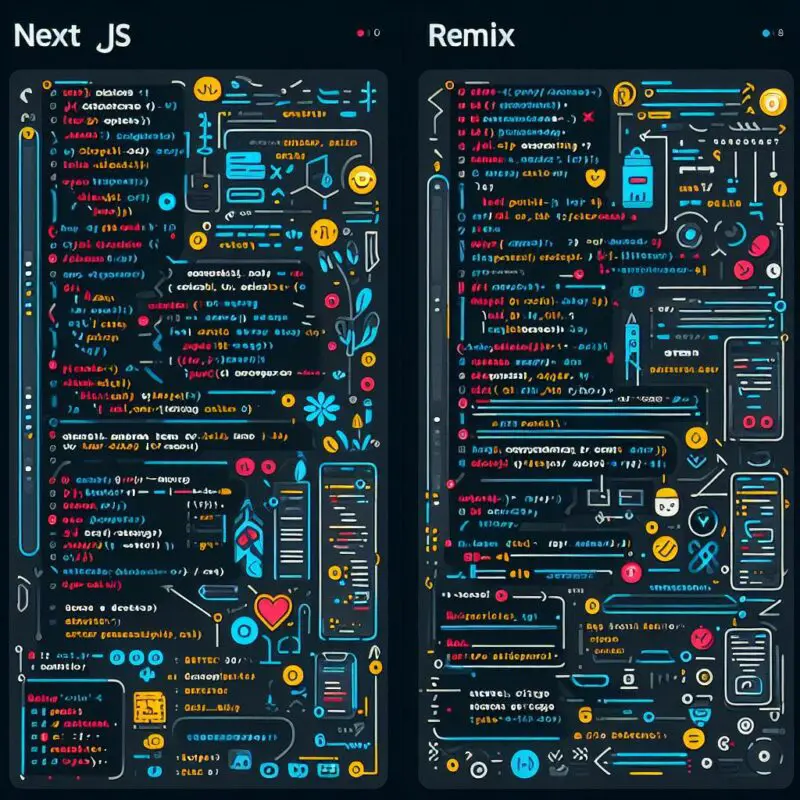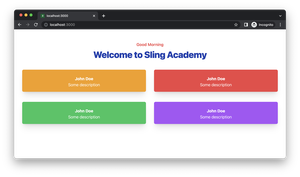
In the rapidly evolving world of web development, choosing the right framework is a critical decision that can greatly impact a project’s trajectory. Two prominent frameworks that have been gaining significant attention are Next.js and Remix. Each offers unique features and follows different approaches to web development, leading to a dilemma among developers about which one to choose for their upcoming projects in 2024. This comprehensive article aims to compare Next.js and Remix on numerous factors, discussing their advantages and disadvantages to help developers make an informed, logical choice.
Understanding the Basics
Before delving into the comparison, it’s essential to understand the basics of both frameworks.
What is Next.js?
Next.js is a popular open-source framework built on React. It offers features like hybrid static and server-side rendering, TypeScript support, smart bundling, route pre-fetching, and more. It’s designed to provide an exceptional developer experience without requiring any configuration.
What is Remix?
Remix is a full-stack JavaScript framework designed to build modern, fast, and resilient user experiences. It unifies client and server with web standards, simplifying code management and enhancing product development.
Routing and Navigation
One of the fundamental differences between Next.js and Remix is their approach to routing and navigation.
Next.js Routing
Next.js adopts a file-based routing system. Each file in the ‘pages’ directory becomes a route. The creation of new routes in Next.js is as straightforward as adding a new file in the ‘pages’ directory.
import React from 'react';
function AboutPage() {
return <div>About Us</div>;
}
export default AboutPage;This code will create a new route called ‘/about’ in a Next.js application.
Since Next.js 13 and newer, you can also add new routes by using App Router (use the ‘app’ directory instead of the ‘pages’ directory).
See also: Next.js Navigation and Routing
Remix Routing
Remix, in contrast, uses a route-centric approach. Routes are explicitly defined in a configuration file, typically remix.config.js. This file maps URLs to route modules.
// remix.config.js
module.exports = {
routes: {
'/': 'src/routes/index.tsx',
'/about': 'src/routes/about.tsx',
'/contact': 'src/routes/contact.tsx',
},
};This configuration file maps the URLs to their respective route modules.
The choice between Next.js and Remix depends on your preference for simplicity (Next.js) versus explicit configuration (Remix).
Data Loading and Fetching
Data fetching techniques in both frameworks vary and can impact your choice depending on your project’s data needs.
Data Fetching in Next.js
In Next.js, various methods are available for data fetching, including fetch (in server components), getServerSideProps, getStaticProps, and getInitialProps.
import React from 'react';
function HomePage({ message }) {
return <div>{message}</div>;
}
export async function getStaticProps() {
const response = await fetch('https://api.example/data');
const data = await response.json();
return { props: { message: data.message } };
}
export default HomePage;Client-side data fetching in Next.js is typically done with standard React useEffect or fetch calls.
See also: Next.js: Fetching Data in Server Components
Data Fetching in Remix
In Remix, the concept of loaders is used to fetch data for a route. These can be defined for both server-side and client-side data fetching.
import { json, LoaderFunction } from '@remix-run/node';
export let loader: LoaderFunction = async ({ request }) => {
const response = await fetch('https://api.example.com/about');
const data = await response.json();
return json({ message: data.message });
};
export default function About({ message }) {
return <div>{message}</div>;
}This unified method of data loading makes Remix easier to learn compared to Next.js, which offers three different data fetching methods.
Performance Optimization
Both Next.js and Remix are engineered for high performance, but they differ in their approach to performance optimization.
Performance in Next.js
Next.js excels in delivering static content efficiently due to its strong support for static site generation. However, as projects scale, Next.js build times increase linearly with your data, which could slow down the development process.
Performance in Remix
Remix shines in serving dynamic content. It’s designed to deliver fast user experiences even on slow networks and automatically handles errors, interruptions, and race conditions which Next.js doesn’t handle out of the box. Also, Remix boasts nearly instant build times that are decoupled from data, making it a more scalable choice for larger projects.
Ecosystem and Community
When it comes to the ecosystem and community, Next.js has a significant edge due to its longer existence and larger community. It offers a well-established ecosystem with a plethora of solutions, plugins, and integrations.
However, Remix is not far behind. Even though it’s newer, Remix is designed to improve developer productivity with its route-centric development and fine-grained control over data loading and navigation. It provides a performance edge, especially in applications with complex data requirements.
The Final Verdict: Next.js or Remix?
The choice between Next.js and Remix ultimately depends on your project’s long-term vision and the development experience you seek to achieve.
If your project serves a vast amount of static content like an e-commerce site’s product pages, category pages, and blog posts, Next.js would be a wise choice due to its strong support for static site generation and many integrations.
However, if you’re building something like a real-time dashboard that must handle dynamic data efficiently, provide fast user experiences even on slow networks, and allow for flexible routing to manage the complex navigation requirements of the dashboard, Remix would be a more fitting choice.
To sum up, both Next.js and Remix are robust and capable frameworks. Your choice should align with the specific needs of your project, considering factors like routing, data fetching, performance optimization, and community support. Always remember to prioritize the ease of use, scalability, and long-term maintainability when making your decision.
Further Exploration and Learning
Once you’ve chosen your preferred framework, consider exploring their respective documentation and communities for additional learning resources. Both Next.js documentation and Remix documentation offer comprehensive guides and tutorials to help you get started on your web development journey.
Moreover, you can explore various tutorials, blog posts, and forums where developers share their experiences and best practices with both frameworks. Remember, continuous learning and experimentation are key to becoming a proficient web developer.
Conclusion
Choosing between Next.js and Remix is not a one-size-fits-all decision. It’s a careful consideration of your project’s requirements, your team’s expertise, and the long-term scalability of your application. While Next.js offers an extensive ecosystem and strong support for static content, Remix stands out for its dynamic flexibility and efficient data handling. Whichever you choose, make sure it aligns with your project’s vision and offers a satisfying development experience.











